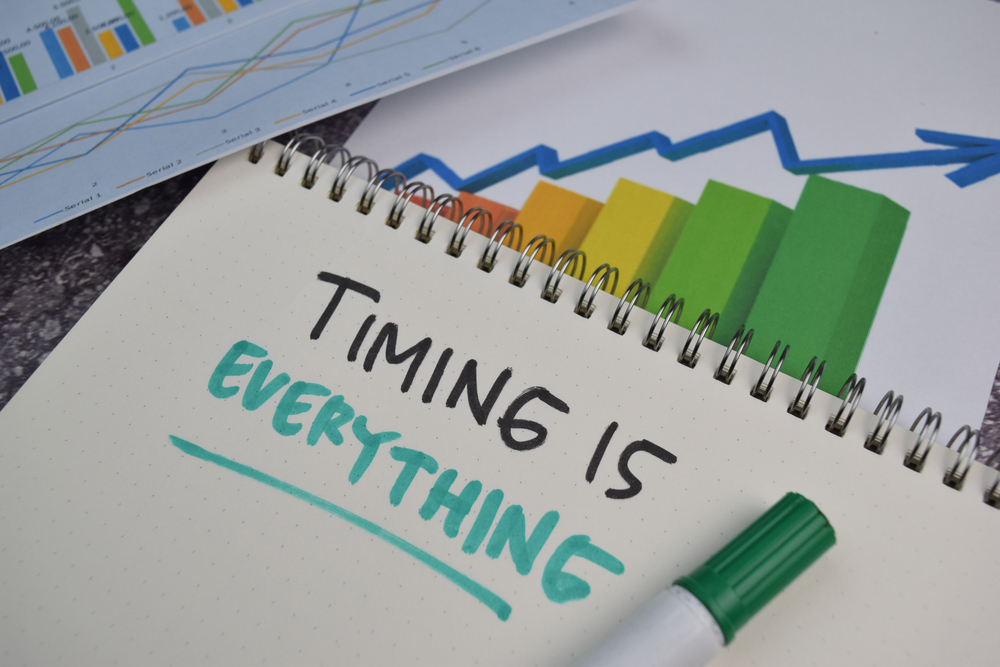If you sell a product or service, your customers are the lifeblood of your business. Through experience, you’ve probably found that your happy customers are your best marketing tool. But how can you know that your customers are happy? And how can you get the insights that help keep them happy? Answer: the customer satisfaction survey.

Anjul Bhambhri, writing in CIO, notes: “A 2018 Forrester Consulting study of global enterprises found that experience-driven businesses grow revenues 1.4x the rate of other companies and enjoy significantly higher customer retention rates.”
In other words, it’s important to get a holistic understanding of your customers.
That doesn’t just mean what they like or dislike about your products and services. It means knowing what they feel and value. Having insight into not only what people need, but why they decide they need something, can help you make better decisions about your marketing, sales, and product or service development.
Why experience data matters
A maxim to follow: the ways your customers feel about your product or service is more important than the way you feel about it. After all, they’re the people who use it. A customer can tell you in five minutes what your team has been wondering for months.
Here’s the proof:
ABC Company offers services and they’ve focused their attention on response time. Their yearly goal was to get response time under 5 minutes, on average. They’ve spent all year measuring it down to the second and finally met the goal.
But does ABC Company’s internal measurement actually correspond to the way their customers perceive response time? What if, in a survey, their customers rate the response time poorly? They’ve spent all year achieving the goals they set, and it’s still not good enough.
There may be other factors that can prompt another look at the way Company ABC approaches response time. Perhaps their service employees always begin calls apologizing for not responding sooner, even if they do it within 3 minutes. Though well-intentioned, those apologies shape customers’ perceptions which, of course, become reality.
On the other hand, maybe customers are rating ABC Company’s response time as excellent. With this rating, they know their efforts to optimize response time have paid off.
Using customer satisfaction surveys to gather experience data
If you own or manage a business, you have probably formed your opinion on surveys. You’ve seen them work (or not). Maybe you’ve decided they’re a “necessary evil” but you don’t put much stock in them.
However, done correctly, a survey can be one of the best sources of customer experience data that you can’t get from any other source. The trick is to create a survey that people actually want to engage with and returns insightful experience data.
Mastering the customer survey

Surveying your customers is an art. It takes skill, practice, refinement, and intuition. If you stick to these best practices, you’ll be well on your way to capturing the experience data your business needs. Here are 6 tips to help you:
1. Decide what you want to know
Creating a good survey is kind of like all those tests you took in school. Your teacher crafted the questions to elicit certain types of responses. Likewise, you can craft your customer satisfaction survey questions to reveal exactly what you want to know about your customers.
That information will depend, of course, on your business. Let’s say you sell a product. Do you want to know how people feel about product quality? Shipping cost? Packaging? Think about all of the factors that make up a customer’s experience with your product. They are all possible touch-points you can target.
Let’s say your company provides a service. You might want customer data on your service quality or employees’ professionalism. You’ll rarely (if ever) get answers to questions you don’t ask, so make sure your team takes your most valuable data into consideration.
Similarly, not all customer data may be useful to you. If you’re unnecessarily asking too much, you’re going to overload your customer and they may bounce from your survey.
2. Experiment with question types
There are a million ways to ask questions poorly. But there are only a few ways to do it well. When writing your customer satisfaction survey questions, format matters. For example, asking open-ended questions won’t get you specific answers from most people.
You might find that a question like “What did you think about our service?” is too open to interpretation. If you’ve decided that you really want to know about your field-service employees’ punctuality, ask specifically about that.
Multiple-choice survey questions can help direct customers to the kind of feedback you’re looking for. Don’t make your questions too subjective. There should be some kind of measurement that resonates with your customer base and your internal team. In other words, everyone should agree on the definitions of the terms you’re using.
3. Phrase your questions carefully
Poorly-composed surveys can hurt you. If it feels like a robot created the survey, you won’t have the opportunity to forge an emotional connection with your customer.
This is the key point and the hidden power behind surveys. They give you an opportunity to step away from the faceless identity of a company. Properly done, surveys show that, like your customers, you’re just people trying to do the best job you can.
So use language that reflects your company. Write like a person. And think about what kinds of questions you would like to be asked. After all, companies probably send you customer satisfaction surveys all the time. Ask yourself which ones resonate with you, then analyze the way they’re constructed.
In the survey, you should also be honest about your goals. After all, you’re trying to create a better customer experience, not just gather data. Tell your customers about your intentions and assure them that their answers not only matter but can help improve their future experience.
Andrew Reid, writing in Entrepreneur, says that “surveys need to feel less like surveys and should feel more like conversations. Use tools that deliver shorter and more fun experiences to improve the quality of experience data you get from your customers.”
4. Consider the best time to send the survey

Knowing when you send your customers a survey is central to getting the kind of feedback you want. Sending out a feedback survey the minute they’ve received a product, for example, will not be helpful. They haven’t had the time to evaluate its use.
On the other hand, it might make sense to send a more timely survey about a service you’ve just provided, while it’s still top-of-mind for your customer.
Finding the best time to send a survey is a process of trial and error. Experiment with a few different times and test your response rates.
5. Don’t offer gift cards as compensation
This tip is controversial. Many companies will say that the only way they can get a good survey response rate is through offering a gift card. It makes sense to reward someone for completing a survey. But there are other forms of rewards you can offer.
Consider offering a discount on your customer’s next purchase. That will entice them to continue their engagement with you. Further, it will prove your effort to provide maximum value for what you’re offering them in the first place.
By contrast, gift cards (especially to other stores) can certainly be carrots that boost response rates. But is the person who responds for compensation really interested in answering your questions thoughtfully or honestly?
Remember that you don’t just want a good response rate. You want valuable customer experience data that you can actually use.
6. Choose your survey software carefully
You could have the best survey in the world. But without the right software to send, collect, and store the data from surveys, you’ll be lost.
Or, as Anjul Bhambhri says, “It must be hosted on the cloud and fit within [your] existing enterprise architecture. It must have capabilities to stitch a holistic view of the customer leveraging centralized and virtualized data.”

The more accessible your customer data is, the easier it will be for you to start making sense of it. Surveys that go unaddressed just result in a waste of your time and effort.
Make sure, in choosing your customer survey software, you find what works best for you, according to your needs.
Conclusion
Gathering experience data from customer satisfaction surveys can mean the difference between one-time and lifelong customers. Great surveys not only give your company insightful data, but they also allow you to forge a stronger personal connection with your customers.
While the process of crafting the perfect survey requires time and trial, it can be worthless if you don’t have the right software system to properly gather data and create action items from it. With the right considerations, you’ll find that it won’t take long to master the customer satisfaction survey.

